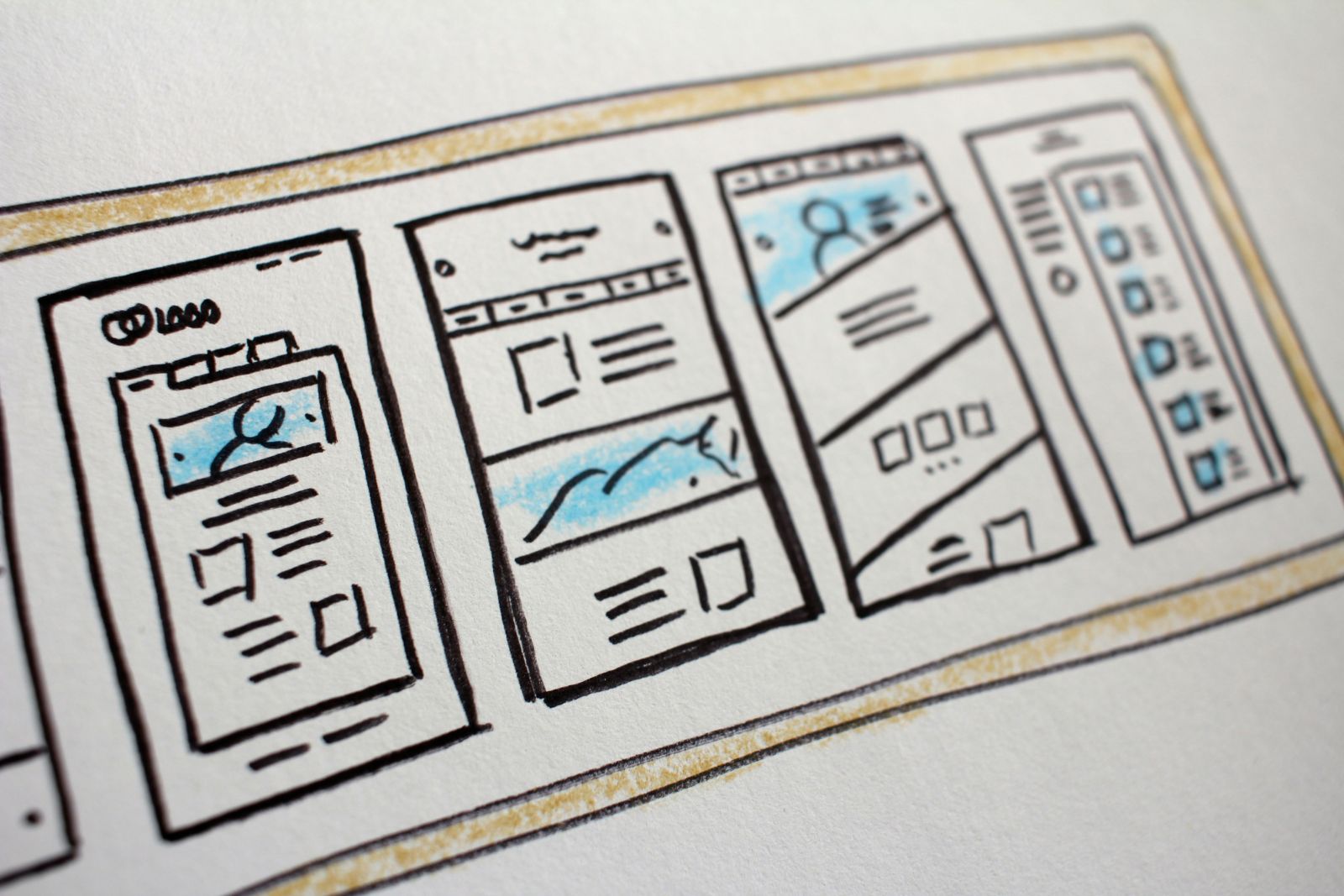The design of your website goes far beyond mere aesthetics. Good web design acts as the gateway to your online presence, the cornerstone of your brand identity, and a crucial determinant of your success in the competitive online realm.
At Inspire Digital, we understand the intricate dance between web design, SEO, and user experience. And with this knowledge, we’re here to guide you through the ever-evolving landscape of digital creativity and functionality.
As technology continues to advance and consumer expectations evolve, the importance of seamless web design has never been clearer. From the moment a visitor lands on your site, they form an impression—an impression that can either captivate and engage or deter and frustrate. That's where our expertise comes in.
In this article, we'll delve into the symbiotic relationship between web design, SEO, and user experience, exploring how each element influences the other and why striking the perfect balance is essential for online success.
Whether you're a business owner looking to revamp your digital presence, a developer seeking to optimise your code for search engines, or a marketer aiming to enhance user engagement, this guide is tailored to empower you with the knowledge and insights needed to thrive in the digital realm.
Let's uncover the intricacies of web design, SEO, and user experience and discover how we can help elevate your online presence to new heights.

Unravelling the relationship between web design and SEO
In the dynamic realm of digital marketing, the intertwining relationship between web design and SEO (Search Engine Optimisation) is no coincidence. In our digital world, it acts as a strategic partnership that lays the foundation for online success.
Understanding how these two elements work in harmony is crucial for crafting a website that not only captivates visitors but also ranks high in search engine results pages (SERPs).
Let's discuss the intricacies of this symbiotic relationship and explore how they complement each other seamlessly.
How does web design and SEO work?
At its core, web design encompasses the visual and functional aspects of a website, encompassing layout, colour scheme, typography, navigation, and user experience (UX).
On the other hand, SEO involves optimising a website's structure, content, and other elements to increase its visibility and ranking on Google SERPs.
While these two disciplines may seem distinct, they are deeply intertwined in shaping the digital landscape.
5 ways web design and SEO work together
- Mobile friendliness: With the exponential rise in mobile internet usage, Google prioritises mobile-friendly websites in its search rankings. Web design plays a crucial role in ensuring responsiveness across various devices, providing a seamless user experience regardless of screen size.
- Easy-to-read design: User engagement and retention are paramount for SEO success. A clean and intuitive design enhances readability and navigation, reducing bounce rates and increasing dwell time—a factor that search engines consider when evaluating website quality.
- Website speed: Page speed directly impacts user experience and SEO performance. A well-optimised design, coupled with efficient coding practices, can significantly improve loading times, reducing bounce rates and increasing the likelihood of higher search engine rankings.
- Sitemaps: A well-structured sitemap aids search engine crawlers in indexing website content effectively, ensuring that all pages are discoverable and accessible to users. Incorporating a sitemap into the design architecture enhances SEO visibility and facilitates navigation for both users and search engines.
- Gaining users' trust: A visually appealing and user-friendly website instils trust and credibility among visitors—a crucial factor for both user experience and SEO. Elements such as clear navigation, secure payment gateways, and authoritative content contribute to building a positive brand reputation and ultimately improving search engine rankings.
Understanding the significance of user experience
User experience (UX) serves as the cornerstone of successful web design and SEO strategies. It's not merely about aesthetics or functionality—it's about creating meaningful interactions that resonate with users and leave a lasting impression.
Let's dive deep into the essence of UX and explore its importance in digital marketing.
What is user experience?
User experience, often abbreviated as UX, encompasses the overall experience that users have while interacting with a website, application, or digital product.
It encompasses a wide array of factors, including usability, accessibility, design aesthetics, performance, and functionality.
At its core, UX design aims to create seamless, intuitive, and delightful experiences that meet users' needs and exceed their expectations.
Why it's important
The importance of user experience cannot be overstated, with 88% of users less likely to return to a site after a negative experience.
Let’s check out other reasons why prioritising UX is essential for businesses:
- Enhanced customer satisfaction: A positive user experience fosters satisfaction and loyalty among customers, driving repeat visits and referrals. By understanding users' preferences, pain points, and behaviours, businesses can tailor their digital experiences to meet their evolving needs effectively.
- Improved engagement and retention: Intuitive navigation, responsive design, and streamlined functionality encourage users to engage more deeply with a website or application. By reducing friction and providing value at every touchpoint, businesses can increase user retention and foster long-term relationships with their audience.
- Higher conversion rates: A well-crafted user experience can significantly impact conversion rates, turning visitors into customers and leads into sales. By optimising the user journey, minimising barriers to conversion, and leveraging persuasive design elements, businesses can maximise their conversion potential and drive revenue growth.
- Positive brand perception: User experience directly influences how users perceive a brand. A seamless and enjoyable digital experience reflects positively on the brand's credibility, professionalism, and commitment to customer satisfaction. Conversely, a poor user experience can tarnish a brand's reputation and drive users away to competitors.
- SEO performance: Search engines like Google prioritise user experience as a ranking factor, rewarding websites that provide valuable, relevant, and user-friendly experiences with higher visibility in search results. By prioritising UX design principles, businesses can improve their search engine rankings and attract more organic traffic to their websites.

Unifying UX and SEO for optimal performance
The convergence of user experience and search engine optimisation is not merely advantageous—it's imperative for driving organic traffic, enhancing engagement, and maximising conversions.
By aligning UX principles with SEO best practices, businesses can create holistic digital experiences that resonate with users and search engines alike.
Let's see how you can seamlessly integrate UX and SEO strategies to achieve unparalleled success.
Make your site responsive
With the number of mobile users expected to reach 7.49 billion worldwide by 2025, ensuring that your website is responsive across all devices is non-negotiable.
Responsive design not only enhances the user experience by providing a consistent and optimised viewing experience but also aligns with Google's mobile-first indexing, improving your site's visibility in search results.
Break up your content
Long, dense blocks of text can overwhelm users and deter them from engaging with your content. By breaking up your content into digestible chunks, and utilising headings, subheadings, and bullet points, you can improve readability, enhance comprehension, and encourage users to explore your content further—a win-win for both UX and SEO.
Improve your site speed and page load times
Site speed is a critical factor that directly impacts both user experience and search engine rankings. According to Google, sites with page load time that goes from 1 second to 3 seconds increase the bounce rate by 32%.
By optimising images, leveraging browser caching, and minimising unnecessary scripts, you can improve your site's speed and enhance both UX and SEO performance.
Make your site easy to navigate
A clear and intuitive navigation structure is paramount for guiding users through your website seamlessly. By organising your content logically, implementing intuitive navigation menus, and providing internal linking opportunities, you can enhance user satisfaction, reduce bounce rates, and improve the crawlability of your site for search engines.
Minimise your bounce rate
A high bounce rate signals to search engines that users are not finding what they're looking for on your website, potentially impacting your search rankings. By focusing on delivering relevant, valuable, and engaging content that meets users' needs and expectations, you can minimise bounce rates and signal to search engines that your site is worthy of higher rankings.
Improve your site's hierarchy
A clear and well-defined site hierarchy not only facilitates navigation for users but also helps search engines understand the structure and relevance of your content. By organising your site's pages into logical categories and subcategories, you can improve the user experience, enhance discoverability, and boost your site's SEO performance.

UX design best practices
A well-crafted UX not only delights users but also drives engagement, fosters loyalty, and ultimately contributes to business success. To achieve these goals, it's essential to adhere to UX design best practices that prioritise user-centricity, intuitive navigation, and seamless interaction:
- Start with a deep understanding of users and their intent: At the heart of effective UX design lies a profound understanding of your users—their needs, preferences, pain points, and motivations. By conducting thorough user research, including user interviews, surveys, and usability testing, you can gain valuable insights into user behaviour and preferences, informing your design decisions and ensuring that your product resonates with its intended audience.
- Develop a plan for how users should experience your product: Before diving into the design phase, it's crucial to develop a comprehensive plan for how users should experience your product. This involves mapping out user journeys, defining user personas, and establishing clear goals and objectives for each interaction. By creating a cohesive and intuitive user flow, you can guide users through your product seamlessly, ensuring a frictionless experience from start to finish.
- Monitor user behaviour for signs of friction and eliminate blockers: UX design is an iterative process that requires ongoing evaluation and optimisation. By leveraging tools like heatmaps, session recordings, and user feedback surveys, you can gain valuable insights into user behaviour and identify areas of friction or frustration within your product. Addressing these pain points promptly and proactively can help improve user satisfaction and retention over time.
- Consider the multi-platform experience: Whether they're accessing your product on a desktop computer, smartphone, or tablet, consistency and responsiveness are key. By adopting a mobile-first approach to design and ensuring that your product is optimised for various screen sizes and resolutions, you can deliver a consistent and cohesive experience to users regardless of the device they're using.
- Ground users in the product: Effective UX design goes beyond aesthetics—it's about creating experiences that resonate with users on a deeper level. By incorporating elements of storytelling, emotional design, and interactive feedback mechanisms, you can create immersive experiences that captivate users and foster a sense of connection with your product.
Elevate your digital presence with Inspire: Seamlessly integrating UX design and SEO
The intersection of UX design and SEO has become increasingly crucial for businesses looking to thrive online. By prioritising user experience and optimising search engines, brands can enhance their visibility, engage their audience, and drive tangible results.
At Inspire, we understand the intricate relationship between UX design and SEO, and we're dedicated to helping businesses harness the power of both disciplines to achieve their goals. Our team of experts specialises in crafting user-centric designs that not only captivate audiences but also align seamlessly with search engine algorithms, ensuring maximum visibility and impact.
Whether you're looking to revamp your website, optimise your content, or enhance your overall digital presence, we are here to guide you every step of the way. From intuitive user interfaces to strategic SEO tactics, we'll work closely with you to develop a tailored approach that drives results and elevates your brand online.
Ready to enhance your digital presence for long-term success?
Contact Inspire Digital today and discover how we can help you unlock the full potential of UX design and SEO for your business!























